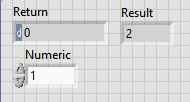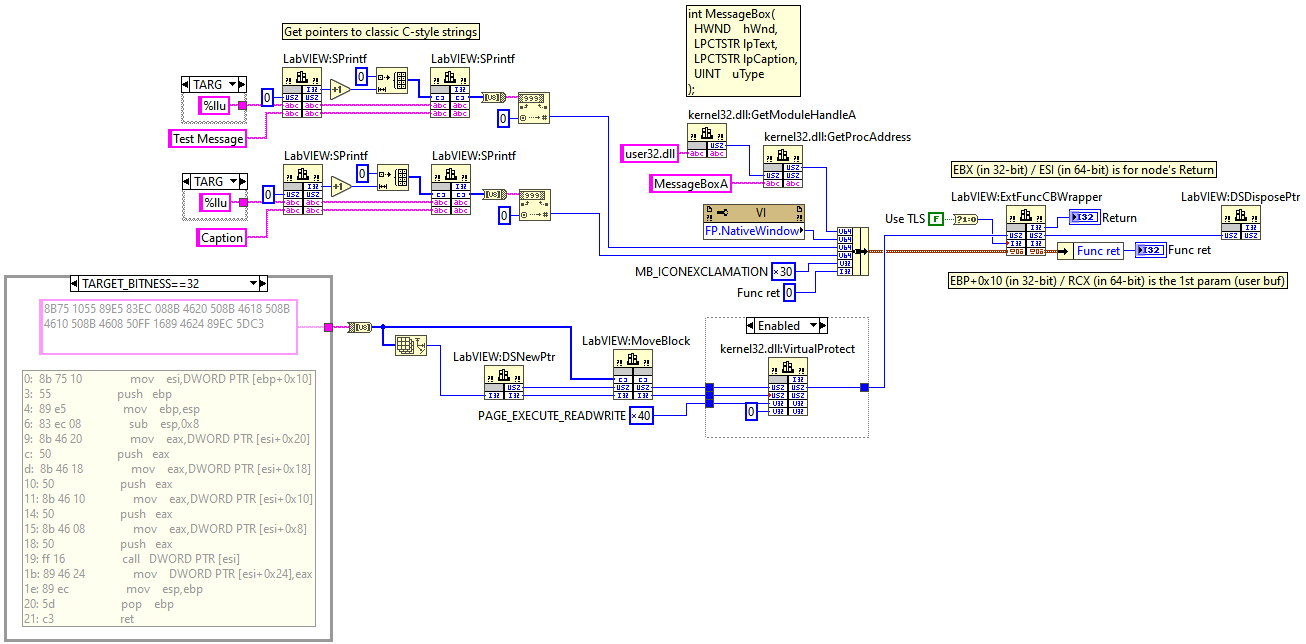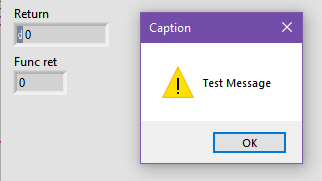Search the Community
Showing results for tags 'extfuncwrapper'.
-
I want to remind once again that all this information is just to have fun playing with LabVIEW and not intended for real projects use. I believe you all understand that. 🙂 Not that a big opening here and even not an opening for some ones, but I found this interesting enough to make a thread. As you may already know, when some library is being called using CLF Node, LabVIEW enters ExtFuncWrapper first to do some guard checks to prevent itself from a silent crash and output some error message to the user instead. I've always considered that wrapper boring enough to study, thus never looked inside. But when once again I faced that I can't call some function through CLFN and have to write my own wrapper library, I asked myself why we cannot call some code by its pointer as in almost any well-known text language?.. Therefore I decided to know how ExtFuncWrapper calls the function. It turned out that ExtFuncWrapper receives the function's pointer (along with the parameters struct pointer) and calls that pointer later as it is (i.e., not doing any manipulations with it). So we can use it to call any function and even any code chunk directly from the diagram! After further research I found ExtFuncWrapper not very convenient to use, because to bypass some checks the parameters struct should be prepared accordingly before the call. But there are many ExtFunc... wrappers in labview.exe and ExtFuncCBWrapper is much easier to use. It has the following prototype: int32_t ExtFuncCBWrapper(uintptr_t CodeChunk, int32_t UseTLS, void *CodeParams); Here CodeChunk is our func / code pointer, UseTLS is 0 as we don't use LabVIEW's Thread Local Storage and CodeParams is our parameters struct. When called ExtFuncCBWrapper runs that CodeChunk, passing CodeParams to it, so we can freely use it later to do what we want. Nuff said, here are the samples. This one increments a Numeric. ExtFuncCBWrapper-Increment.vi As you can see, I'm passing a Numeric value as CodeParams pointer into ExtFuncCBWrapper and in the assembly I have to pull that pointer out to deal with my parameters. I'm not that excellent in asm codes, so I used one of many online x86 compilers-decompilers out there. It's even simplier in 64-bit IDE as the first parameter is already written into RCX. Okay, here goes a more advanced example - it calculates a sum of two input Numerics. ExtFuncCBWrapper-SumOfTwo.vi Here I'm passing a cluster of three parameters as CodeParams pointer (two Numerics and the resulting Sum) and in the asm I'm grabbing the first parameter, adding it to the second one and writing the result into the third one. Pretty simple operations. Now let's do some really wild asm on the diagram! 😉 The latter example calls MessageBox function from user32.dll. ExtFuncCBWrapper-MsgBox.vi This is what Rolf calls a diagram voodoo. 😃 I have to provide 4 parameters to MessageBox, 2 of which are string pointers. Thus I'm getting these pointers and writing them into my params cluster (along with the panel handle and the dialog type). When ExtFuncCBWrapper is called, in the asm code I have to use the prologue and epilogue pieces to prevent the stack corruption as I'm pushing 4 parameters later onto the stack to provide them to MessageBox. After the call I'm writing the result into the function return parameter. In 64-bit IDE the prologue/epilogue is somewhat simplier. Maybe you already noticed that I'm doing VirtualProtect before calling ExtFuncCBWrapper. This is done to pass through Windows Data Execution Prevention (DEP) protection. I'm setting execute and read/write access for the memory page with my code, otherwise LabVIEW refuses to run my code and throws an exception. Surprisingly it is thrown only in 64-bit IDE, but in 32-bit LV I can just wire the U8 array to ExtFuncCBWrapper, not going through that DSNewPtr-MoveBlock-VirtualProtect-DSDisposePtr chain. I did not start to figure out such a behaviour. Well, to be honest, I doubt that someone will find all these samples really useful for his/her tasks, because these are very low-level operations and it's much easier to use a common CLFN or a helper DLL. They are here just to show that the things described are definitely doable from an ordinary diagram, and that doesn't require writing any libraries. With a good asm skills it's even possible to realize callback functions or call some exotic functions (like C++ class methods). Some things might be improved also, e.g. embedding a generic assembly compiler to have a possibility to write the codes instead of raw bytes on the diagram. Ideally it's even possible to implement an Inline Assembly Node. Unfortunately, I have neither the time nor much desire to do it myself.
- 12 replies
-
- 4
-








